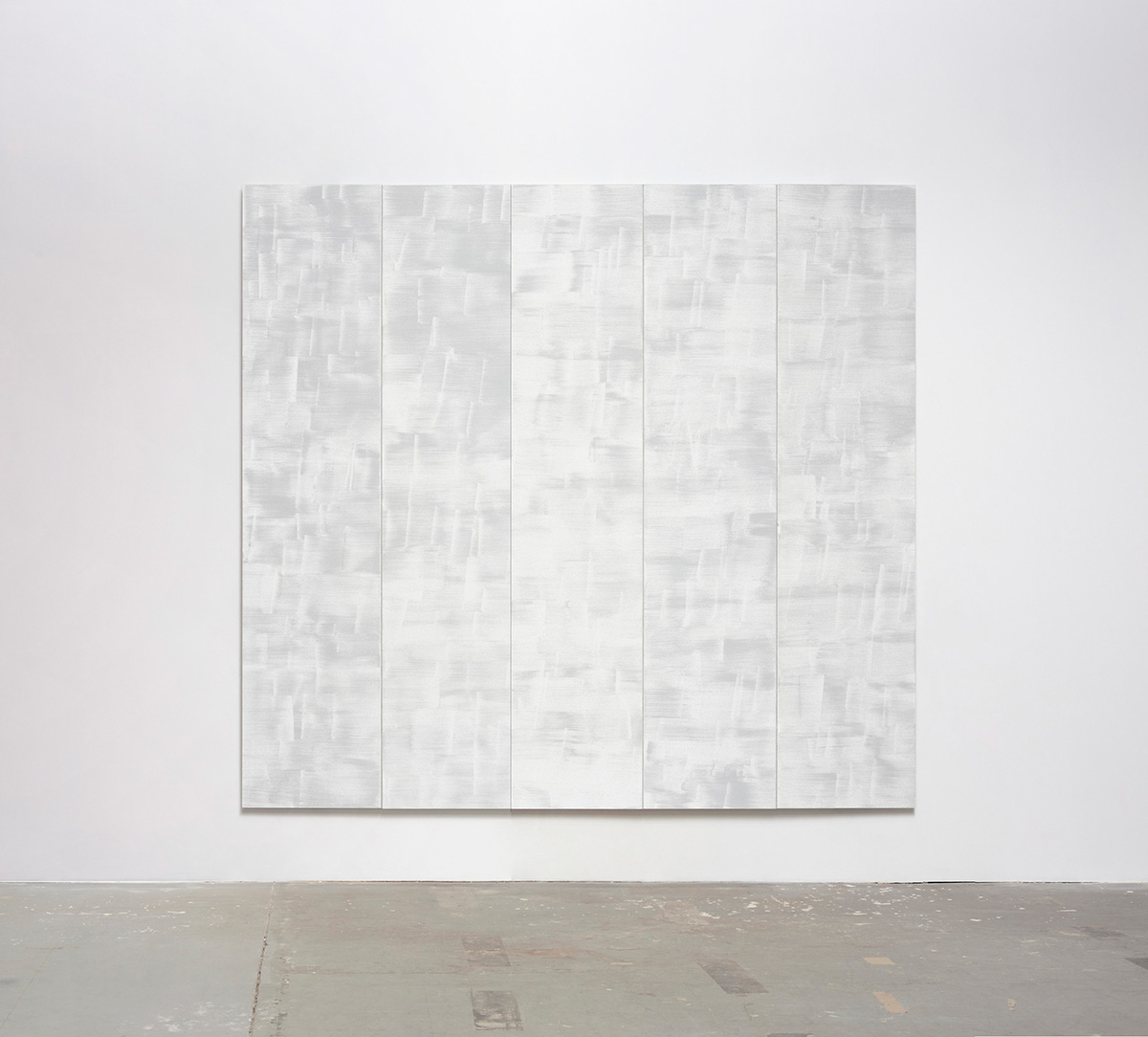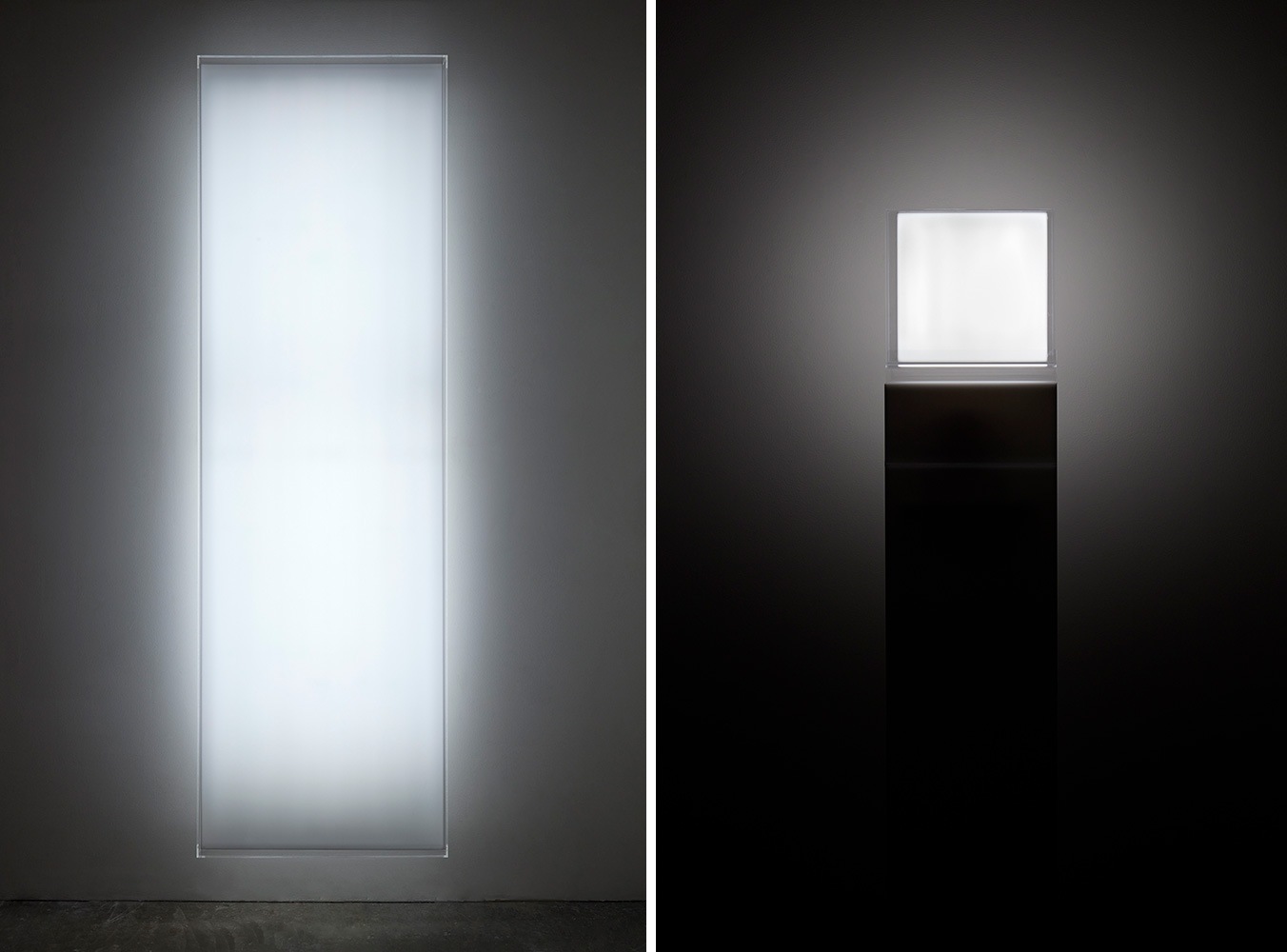ART CITIES:N.York-Mary Corse
 Mary Corse investigates materiality, abstraction, and perception through the subtly gestural and precisely geometric paintings that she has made over her fifty-year career. Earning a BFA in 1968 from Chouinard Art Institute, Los Angeles, Corse developed her initial work during the emergence of the Light and Space movement in Southern California. Throughout the 1960s, she experimented with unconventional media and supports, producing shaped canvases, works with plexiglass, and illuminated boxes.
Mary Corse investigates materiality, abstraction, and perception through the subtly gestural and precisely geometric paintings that she has made over her fifty-year career. Earning a BFA in 1968 from Chouinard Art Institute, Los Angeles, Corse developed her initial work during the emergence of the Light and Space movement in Southern California. Throughout the 1960s, she experimented with unconventional media and supports, producing shaped canvases, works with plexiglass, and illuminated boxes.
By Dimitris Lempesis
Photo: Pace Gallery Archive
Mary Corse’s solo exhibition at Pace Gallery in Palo Alto features three large paintings and four electric light boxes of different sizes in conversation with one another. Throughout her innovative practice, Corse has challenged viewers’ perception and created paintings of light. The exhibition comprises three large-scale paintings, two freestanding light boxes situated on pedestals, and two hanging light boxes installed against the gallery’s walls. Suspended from the ceiling using monofilaments, these works are powered by Tesla coils that wirelessly transfer electromagnetic fields through the walls and allow the light boxes to hover in the exhibition space. Similarly, Corse’s use of microspheres in her paintings give viewers the impression that the canvases are lit from within as they refract light from different angles depending on the viewer’s position. The Inner Band and Multiband paintings in Pace’s exhibition shapeshift as viewers move around them, with vertical bands disappearing and reappearing from various points of view. Corse has described her iconic argon light boxes as “light paintings,” and she first created works of this kind in the mid-1960s. It was in this period that Corse began studying physics, an endeavor that deeply informed her artistic production. Corse’s light boxes have long complemented her painting practice, which the artist has described as “a conversation with abstraction.” She has said that the light boxes were part of her efforts to “put the light into the painting,” an aim that also informed her return to painting in the following years. As the artist said in an interview “At that time I was really looking for an objective truth, an objective reality, I wanted to make an object that was its own, that was on its own”. This search for an objective truth epitomized in the lightboxes shifts for Corse in her studies of quantum physics and she turns back to painting in the late 1960s, deliberately introducing the subjective brushstroke.
Mary Corse is associated with the 1960s Light & Space Movement of southern California, and is primarily known for her minimalist, monochromatic paintings, which explore the relationship between materiality and perception. Since the mid-1960s, Corse has developed an innovative technique that involves mixing acrylic paint with microspheres (tiny glass beads commonly used in the white lines of lane dividers on highways) and painting vertical bands onto the canvas. These fields have an illuminating effect, so that as viewers move in front of the painting, oscillating bands of varying color and texture are exposed, darkening and brightening before their eyes. Although Corse’s paintings are minimal in their composition, the artist’s hand is clearly and deliberately present in the brushwork on the surface of the paintings. The shifting light across the canvas can either expose the brushworks and texture of the microspheres, or flatten it so that the canvas appears as a more uniform monochromatic surface. Over the past 10 years, Corse has introduced primary colors into her work, exploring how human perception of color is a highly individual and subjective experience. Corse is interested in the various ways the brain responds when incoming light frequencies react to different cells in the eye. For Corse, it is the interaction between the painting and the viewer that truly “activates” the work.
Photo: Mary Corse, Untitled (White Multiband, Horizontal Strokes), 2021, glass microspheres in acrylic on canvas, 78″ × 102″ (198.1 cm × 259.1 cm), © Mary Corse, Courtesy the artist and Pace Gallery
Info: Pace Gallery, 229 Hamilton Avenue, Palo Alto, CA, USA, Duration: 4/11/2021-29/1/2022, Days & Hours: Tue-Fri 11:00-18:00, Sat 12:00-17:00, www.pacegallery.com


Right: Mary Corse, Untitled (Electric Light), 2021, argon, Plexiglas, high-frequency generator, light tubes, monofilament, 53-7/8″ × 12-7/8″ × 8″ (136.8 cm × 32.7 cm × 20.3 cm), © Mary Corse, Courtesy the artist and Pace Gallery
